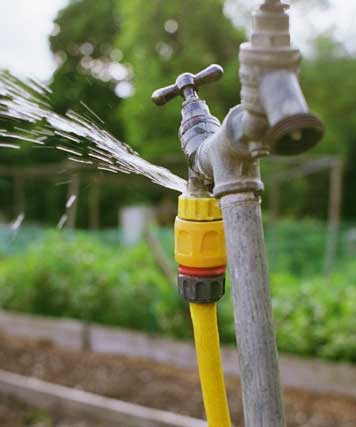6 Ways to Find Concealed Water Leakages in Your Home
6 Ways to Find Concealed Water Leakages in Your Home
Blog Article
They are making a number of great pointers on Leaking water lines as a whole in this great article following next.

Early discovery of dripping water lines can minimize a potential catastrophe. Some small water leakages may not be noticeable.
1. Examine the Water Meter
Examining it is a proven way that helps you find leakages. If it moves, that shows a fast-moving leak. This means you may have a sluggish leakage that might also be underground.
2. Examine Water Consumption
Examine your water expenses as well as track your water usage. As the one paying it, you ought to notice if there are any type of disparities. If you identify sudden changes, despite your consumption being the same, it indicates that you have leakages in your plumbing system. Keep in mind, your water expense should fall under the exact same range monthly. An abrupt spike in your bill indicates a fast-moving leakage.
A steady rise every month, even with the very same habits, shows you have a sluggish leakage that's also gradually escalating. Call a plumber to extensively check your building, particularly if you really feel a cozy location on your floor with piping beneath.
3. Do a Food Coloring Test
When it concerns water intake, 30% originates from toilets. Examination to see if they are running appropriately. Decrease flecks of food shade in the tank and also wait 10 minutes. If the shade in some way infiltrates your bowl throughout that time without flushing, there's a leak between the container as well as dish.
4. Asses Outside Lines
Don't neglect to inspect your outdoor water lines as well. Test spigots by attaching a yard pipe. Should water seep out of the link, you have a loosened rubber gasket. Replace this and also make sure all links are tight. It will certainly help obtain it properly checked out and preserved yearly if you have actually got a lawn sprinkler system. One little leakage can waste tons of water and also surge your water bill.
5. Evaluate the scenario and check
Home owners ought to make it a habit to examine under the sink counters and also even inside cupboards for any kind of bad odor or mold and mildew development. These two warnings show a leak so punctual interest is called for. Doing routine examinations, even bi-annually, can conserve you from a significant problem.
Examine for discolorations as well as compromising as many pipelines and devices have a life expectancy. If you believe leaking water lines in your plumbing system, do not wait for it to intensify.
Early detection of leaking water lines can minimize a possible calamity. Some tiny water leakages might not be noticeable. Inspecting it is a proven way that aids you discover leaks. One tiny leakage can waste loads of water and increase your water expense.
If you suspect dripping water lines in your plumbing system, do not wait for it to escalate.
How to Know If Your Home Has a Hidden Leak
Water Meter Reveals Inexplicable Water Usage
If you’d like to test whether or not there’s a leak somewhere in your home, you can do this using your water meter. Here is how to conduct the test:
Don’t use any water in your home for at least 30 minutes; this also means not turning on faucets or water-using appliances.
Go outside, and check your water meter for activity.
If your water meter shows that there was activity, even though no one was using any water, this proves that there is a leak in your home.Visible Mold or Mildew Growth
Leaks behind walls create moist, dark environments that allow mold and mildew to grow and thrive. Eventually, you might see mold growth forming on the wall closest to a hidden leak.
If mold is growing in an area that receives a high amount of moisture, such as a bathroom, it may simply be an indication that better ventilation is needed. However, if you see mold growth on a wall or the ceiling in an area where you would not expect, you probably have a hidden leak.
Musty, Mildew Odor
Sometimes you might not be able to see the mold or mildew that is growing as a result of a leak. However, the smell can give the problem away just as easily. If you catch a whiff of something musty, there’s a good chance that old water is collecting somewhere in your home that you can’t see.
Stained/Warped Walls, Ceilings, or Floors
When your home soaks up water, a variety of red flags can become visible, including ceiling stains, bubbling drywall, warped walls, and sagging floors. While these issues can be caused by excess humidity, they can also be signs that a pipe or plumbing connection has started leaking behind your walls.
Inexplicably High Water Bill
After a while, you get a general sense for what your water bill should be. If you own a pool or sprinkler system, your bill will tend to be higher during summer. However, if you receive a water bill that seems especially high, and you can’t figure out what caused it, then you may have a hidden leak somewhere that’s increasing your bill.
https://www.plumbingjoint.com/blog/2019/july/how-to-know-if-your-home-has-a-hidden-leak/

I hope you enjoyed our topic on Hacks to detect leaks. Many thanks for finding the time to browse our article post. Remember to take a moment to share this blog post if you liked it. We appreciate reading our article about Hacks to detect leaks.
Report this page